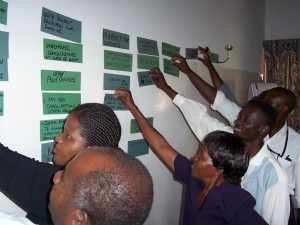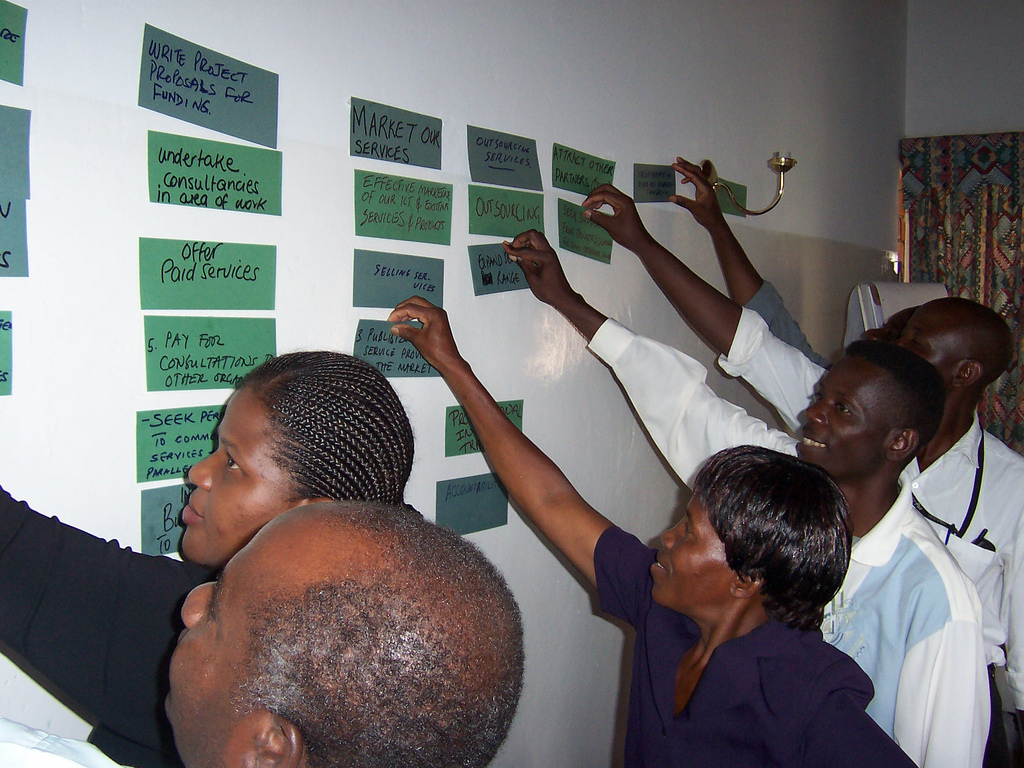Focus groups can be an effective cost and time saving technique for social science researchers, depending on the type and design of the research study being conducted with the aim of identifying areas of agreement and disagreement among the participants. Their original purpose was not to be a standalone method of data collection, rather, they were used as a way “of triangulating qualitative and quantitative data from the same participants (pp. 305).
Arguments have been posed both for and against their effectiveness in their use in a single method research study. However, there are both benefits and pitfalls to using a focus group as part of a research design. A notable consideration is the importance of the focus group in the research process, which will guide the type of questions asked during the group time. With careful planning, some of the pitfalls below may be avoided.
Benefits to Using a Focus Group
- Interaction among participants to create richer answers to questions

- Can be a more relaxed atmosphere with a type of discourse/conversation setting, allowing for the participants to be more comfortable in providing truthful answers
- Conversation can help a participant clarify their viewpoint/opinion
Pitfalls of Using a Focus Group
- Can create confrontation between participants if there is a disagreement
- Peer pressure
- Poor group dynamic
- At times hard to tell who is speaking on a recording
Some studies would benefit from using multiple methods of data collection if the time and funding is provided, but when that is not possible, there are methods available to enhance the confidence of using a focus group effectively.
Ways to Enhance Confidence in Data Gleamed from a Focus Group
- Conduct multiple focus groups from multiple sites
- Include other data sources, such as quantitative and demographic data
- Design interview guides using nondirective questions and review with moderators prior to the focus group
- Train the moderator(s) to guide the discussion and create deeper conversations
- Use multiple researchers in the same group to prevent bias fallacy who also take notes, including notes on nonverbal behavior
- Digitally record all focus group discussion for transcription, either via video or audio only
- Debrief with the research team after the focus group regarding any potential problems with the groups that may affect the data analysis, such as members who dominated conversations, off topic incendiary rants, etc.
- Ensure a stable group of people if the group meets more than once.
Data Analysis
One common problem with all qualitative data is analysis. With a focus group, the data taken from the group should be used as a focus of the analysis (pp. 299). The researchers must design an analytical approach that is flexible enough to be able to identify and rule out any confounding influence before final conclusions are made. Coding of accurate transcripts is vital to this data analysis. The conversations should be coded in large chunks that cover each of the major issues discussed. These chunks may include many instances of conflicting information and opinions which will then need to be subjected to a finer coding method in minute detail analysis. Thus, the researcher notes of nonverbal body language can prove vital, if the controversy made a participant uncomfortable causing them to concede their point. It is also important to have a consistent and single transcriber and coding method of all focus groups, if there are multiple groups held. This provides an internal consistency, raising the validity of the research.
Thus, focus groups can be a very valuable method of data collection, if proper care is taken in their planning and design, including the design of the data analysis. Multiple groups and data sources are always the ideal, but when pressed for time and funding, a focus group is an excellent alternative.
Source: Kidd, P.S. & Parshall, M.B. (2000). Getting the focus and the group: Enhancing analytical rigor in focus group research. Qualitative Health Research, 10(3), 293-308.


Hi there,
Thanks for sharing this post,
is very helpful article.
You are welcome.